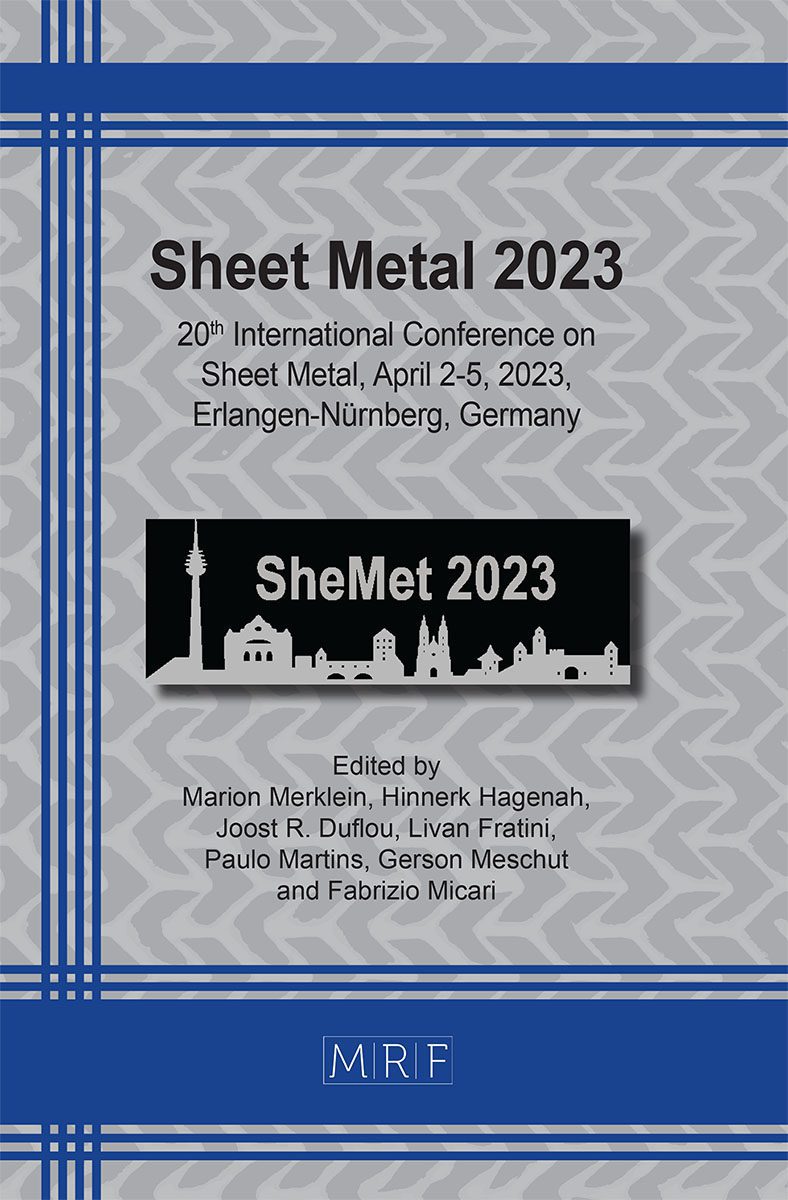Revisiting image-based quality evaluation of laser cut edges
Masoud Kardan, Nikita Levichev, Alberto Tomás García, Joost R. Duflou
download PDFAbstract. The optimization of laser cutting process parameters relies on productivity and obtained edge quality. Whereas maximizing cutting speed is a default procedure to increase the process performance, quality assessment of a cut edge is a non-trivial task. Both contact-based and image-based approaches can be used to quantify the quality of a cut surface. Since contact-based techniques are time-consuming and typically require expert knowledge, the development of simple and fast image-based approaches could improve the performance of sheet metal workshops. Due to the numerous quality characteristics that have to be considered, a significant challenge remains to establish a versatile approach for image-based quality evaluation. Within this paper, the quality assessment of laser cut edges by means of image processing techniques is analyzed. Additionally, the potential for employing visual evaluation to assess all quality indicators in a comprehensive measuring strategy is explored. Finally, the role of the presented approaches in shifting toward intelligent manufacturing is briefly discussed.
Keywords
Laser, Cutting, Quality Evaluation
Published online 3/17/2023, 8 pages
Copyright © 2023 by the author(s)
Published under license by Materials Research Forum LLC., Millersville PA, USA
Citation: Masoud Kardan, Nikita Levichev, Alberto Tomás García, Joost R. Duflou, Revisiting image-based quality evaluation of laser cut edges, Materials Research Proceedings, Vol. 25, pp 363-370, 2023
DOI: https://doi.org/10.21741/9781644902417-45
The article was published as article 45 of the book Sheet Metal 2023
![]() Content from this work may be used under the terms of the Creative Commons Attribution 3.0 licence. Any further distribution of this work must maintain attribution to the author(s) and the title of the work, journal citation and DOI.
Content from this work may be used under the terms of the Creative Commons Attribution 3.0 licence. Any further distribution of this work must maintain attribution to the author(s) and the title of the work, journal citation and DOI.
References
[1] N. Levichev, J. R. Duflou, On multi-sensor monitoring of fiber laser fusion cutting, IOP Conf. Ser. Mater. Sci. Eng. 1135 (2021) 012014. https://doi.org/10.1088/1757-899X/1135/1/012014
[2] M. Pacher, L. Monguzzi, L. Bortolotti, M. Sbetti, B. Previtali, Quantitative identification of laser cutting quality relying on visual information, Lasers in Manufacturing Conference (2017)
[3] DIN ISO 9013. Thermal cutting – Classification of thermal cuts – Geometrical product specification and quality tolerances. (2017).
[4] A. R. Torna, T. H. J. Vanekera, Mass Personalization with Industry 4.0 by SMEs: a concept for collaborative networks, Procedia Manuf. 28 (2019) 135-141. https://doi.org/10.1016/j.promfg.2018.12.022
[5] DIN ISO 25178. Geometrical product specifications (GPS) – Surface texture: areal. (2021).
[6] E. Librera, G. Riva, H. Safarzadeh, B. Previtali, On the use of areal roughness parameters to assess surface quality in laser cutting of stainless steel with CO2 and fiber sources, Procedia CIRP. 33 (2015) 532-537. https://doi.org/10.1016/j.procir.2015.06.069
[7] L. Tatzel, F. Puente León, Image-based roughness estimation of laser cut edges with a convolutional neural network, Procedia CIRP. 94 (2020) 469-473. https://doi.org/10.1016/j.procir.2020.09.166
[8] A. Tomás García, N. Levichev, V. Vorkov, et al. Roughness prediction of laser cut edges by image processing and artificial neural networks, Procedia Manuf. 54 (2021) 257-262. https://doi.org/10.1016/j.promfg.2021.07.040
[9] N. Levichev, G. Costa Rodrigues, V. Vorkov, J. R. Duflou, Coaxial camera-based monitoring of fiber laser cutting of thick plates, Opt. Laser Technol. 136 (2021) 106743. https://doi.org/10.1016/j.optlastec.2020.106743
[10] J. Stahl, C. Jauch, M. Tuncel, M. Huber, Investigation of different illumination scenarios for the evaluation of thermally cut edges with convolutional neural networks using a mobile device. In: Proceedings of IS&T International Symposium on Electronic Imaging 2021. https://doi.org/10.2352/ISSN.2470-1173.2021.6.IRIACV-314
[11] N. Levichev, A. Tomás García, M. Kardan, D. Cattrysse, J. R. Duflou, Experimental validation of a machine learning algorithm for roughness quantification in laser cutting, Procedia CIRP. 113 (2022) 575-580. https://doi.org/10.1016/j.procir.2022.09.175
[12] F. Blateyron, The Areal Field Parameters. In: R. Leach (Eds), Characterization of Areal Surface Texture, Springer, Berlin, Heidelberg, 2013, pp. 15-43. https://doi.org/10.1007/978-3-642-36458-7_2
[13] Y. Zhang, J. Lei, Prediction of laser cutting roughness in intelligent manufacturing mode based on ANFIS, Procedia Eng. 174 (2017) 82-89. https://doi.org/10.1016/j.proeng.2017.01.152
[14] A. F. Courtier, M. McDonnell, M. Praeger, et al. Modelling of fibre laser cutting via deep learning, Opt. Express. 29 (2021) 36487-36502. https://doi.org/10.1364/OE.432741
[15] M. Pacher, L. Franceschetti, S. C. Strada, et al. Real-time continuous estimation of dross attachment in the laser cutting process based on process emission images, J. Laser Appl. 32 (2020) 042016. https://doi.org/10.2351/7.0000145
[16] C. Goppold, T. Pinder, P. Herwig, Transient beam oscillation with a highly dynamic scanner for laser beam fusion cutting, Adv. Opt. Technol. 5 (2016) 61-70. https://doi.org/10.1515/aot-2015-0059
[17] N. Levichev, T. Staudt, M. Schmidt, J. R. Duflou, Hyperspectral imaging and trim-cut visualization of laser cutting, CIRP Ann. Manuf. Technol 70 (2021) 207-210. https://doi.org/10.1016/j.cirp.2021.04.015
[18] M. Kardan, N. Levichev, J. R. Duflou, Experimental and numerical investigation of thick plate laser cutting using dynamic beam shaping, Procedia CIRP. 111 (2022) 740-745. https://doi.org/10.1016/j.procir.2022.08.115































